Presenting Speed Cache's New Design and UX for Joomla!
Managing your website’s optimization is no mean task. At the same time, you need to keep an eye out for file sizes, caching, CDN and a never-ending list of other things. Speed Cache for Joomla! has just received a new update that focuses on bringing issues to you, rather than having you look for the issues.
The new version of Speed Cache has a brand new design and user experience with a dashboard that shows a digest of all speed optimization settings and their status on your Joomla! blog. This summary serves as an overview, highlighting anything that requires your attention. All of Speed Cache’s features remain the same, but some of them have moved or look different. In this article, we take a look at Speed Cache’s new design and user experience, and how you can make the most out of your updated plugin.
The Speed Cache Dashboard
The frontpage of Speed Cache is now a dashboard from where you can keep an eye on your Joomla! blog’s status and make changes as you deem fit. Navigate to it from the Components menu by clicking on Speed Cache. The top part is where you navigate to Speed Cache’s settings and configuration. You can also clear all types of cache on your website with a single click on the clear all caches button.
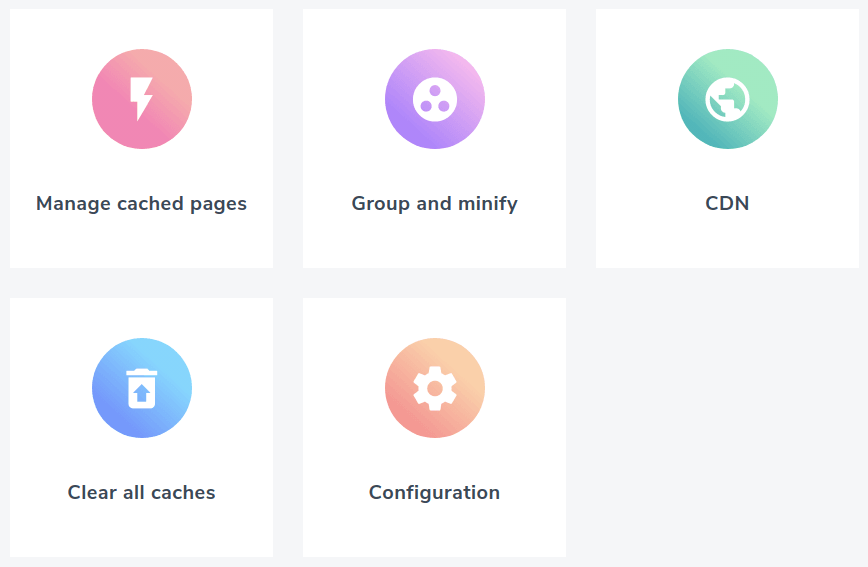
Before exploring these new pages, the rest of the dashboard gives you more important information about the status of your blog. The information is presented as a grid, where each cell either describes a setting, or alerts you when something is wrong.
Cells with a green tick tell you that everything is alright. Other cells will have orange text with a call for action. These can be one of two types. In some cases, you might need to set up the feature, in which case you might need to use the buttons at the top of the dashboard. In other, simpler cases, you will get a button to fix broken features; by clicking on the fix it now button, you can improve your Joomla! blog’s speed and optimization.
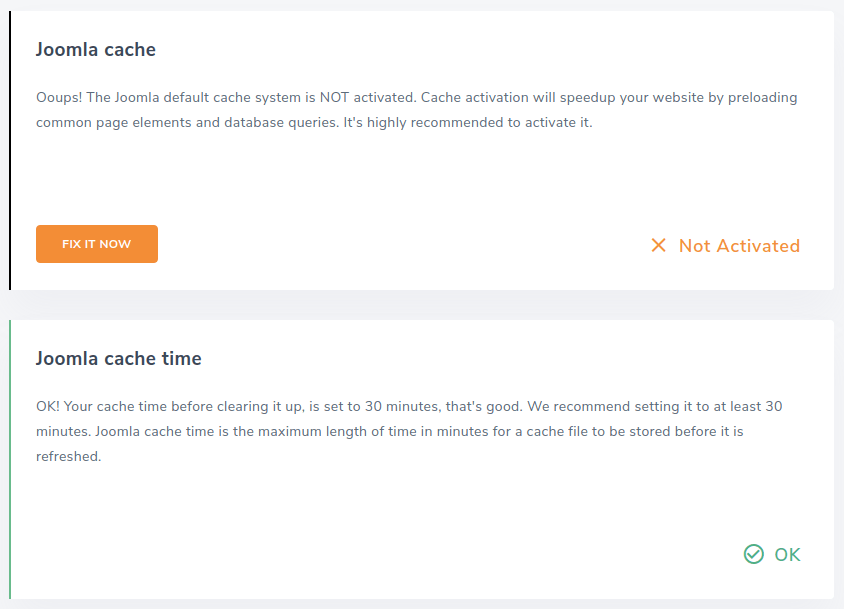
Back towards the top of the dashboard, there are five buttons to configure your Joomla! blog. Of these buttons, the clear all caches button is the simplest one: press it to clear your Joomla! blog’s cache. The others warrant a more in-depth explanation.
Configuring your Joomla! Blog from the Speed Cache Dashboard
The first three buttons—manage cached pages, group and minify, and CDN—function similarly to each other. If you click on any of these buttons, you are led to a new page where you can configure different aspects of your Joomla! blog’s optimization and configuration.
The pages’ content is intuitive. For example, in the manage cached pages screen, you can choose which pages should be cached. With the new design, bulk options and more general options are in the top bar. You can navigate across the different types of caching rules using the tabs just above the table.
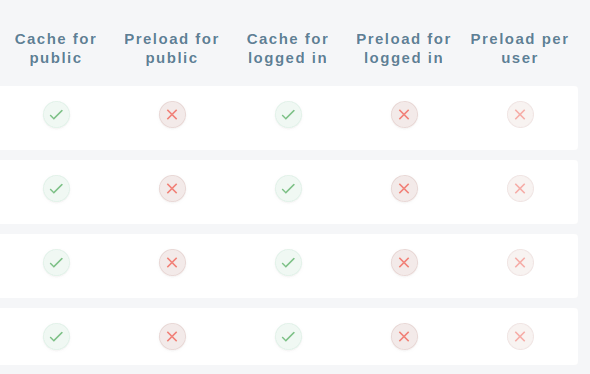
The table itself is much easier to use with Speed Cache’s new user experience. Each rule has a set of clickable status icons. You can click on any tick or cross to disable or enable a setting for particular pages respectively.
The group and minify page too has a new user experience. Up top you can enable or disable settings by toggling switches. Similarly to the caching rules, in the table below you can minify individual scripts by toggling the switch next to each file. Once again, the tabular layout above the table can be used to filter file types: all files, Javascript, CSS and font files.
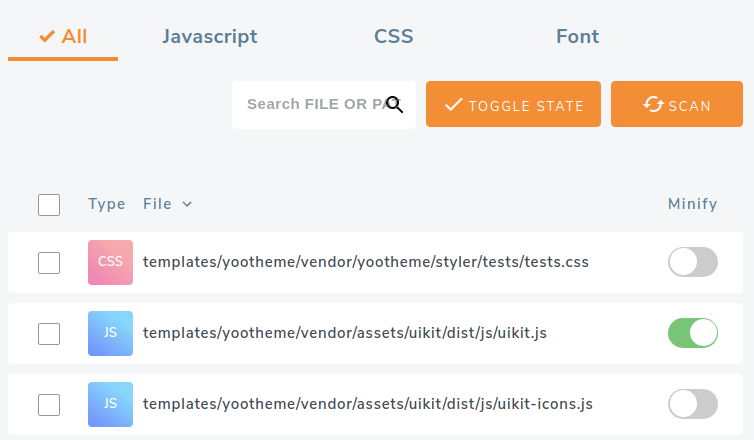
An even simpler page is the CDN page. Configuring your Joomla! blog’s CDN through Speed Cache is a simple process that starts by toggling the activate CDN switch. The rest of the options remain the same as they were just before the update.
However, the one page that has undergone the biggest transformation is the configuration page. This screen can be accessed either from the dashboard or from the top bar on any Speed Cache page by clicking on the options button.
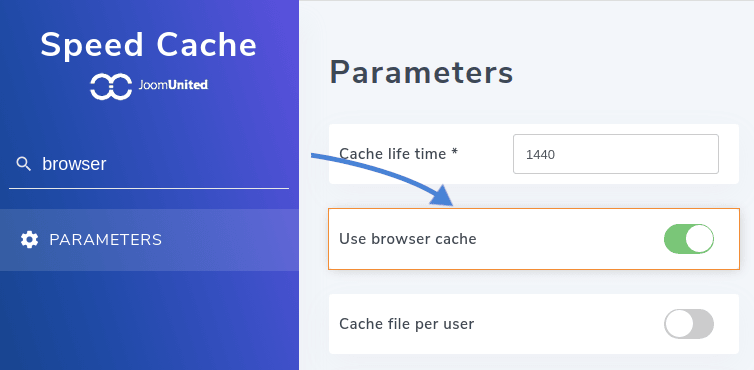
The configurations’ modern design might look intimidating if you had gotten used to the previous design. In reality, all settings remain the same as before the update, but the user experience has improved. If you cannot find an option that you are looking for, you can now navigate more easily through Speed Cache by using the AJAX search functionality. This feature does not only filter out irrelevant tabs, but also highlights the relevant options.
Managing your Joomla! blog’s content is more than enough work. At the end of a long, hard day of work, optimizing your website might sound more daunting than it has to be. Speed Cache’s latest update removes that barrier. With the new design and user experience, you can always keep an eye on your Joomla! blog’s health, whether that concerns caching, minification or your CDN.
When you subscribe to the blog, we will send you an e-mail when there are new updates on the site so you wouldn't miss them.







Comments